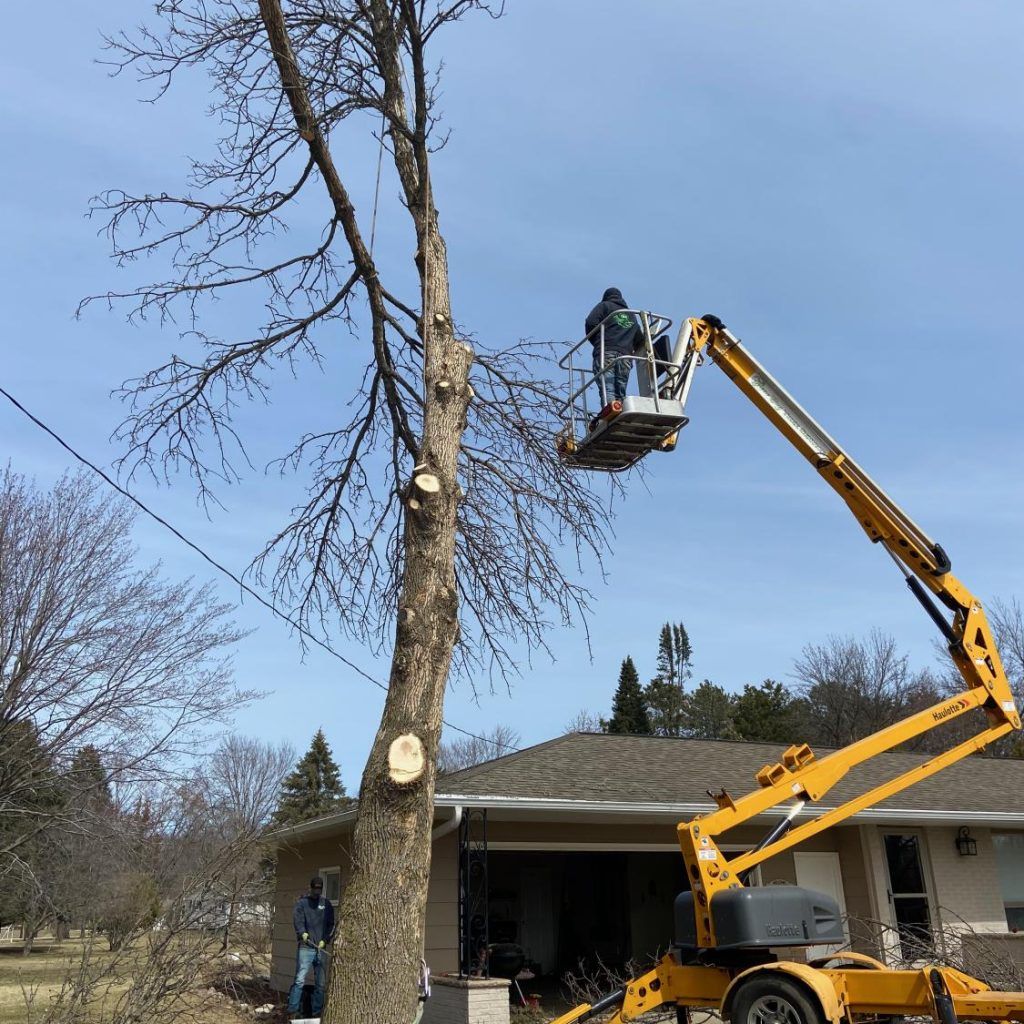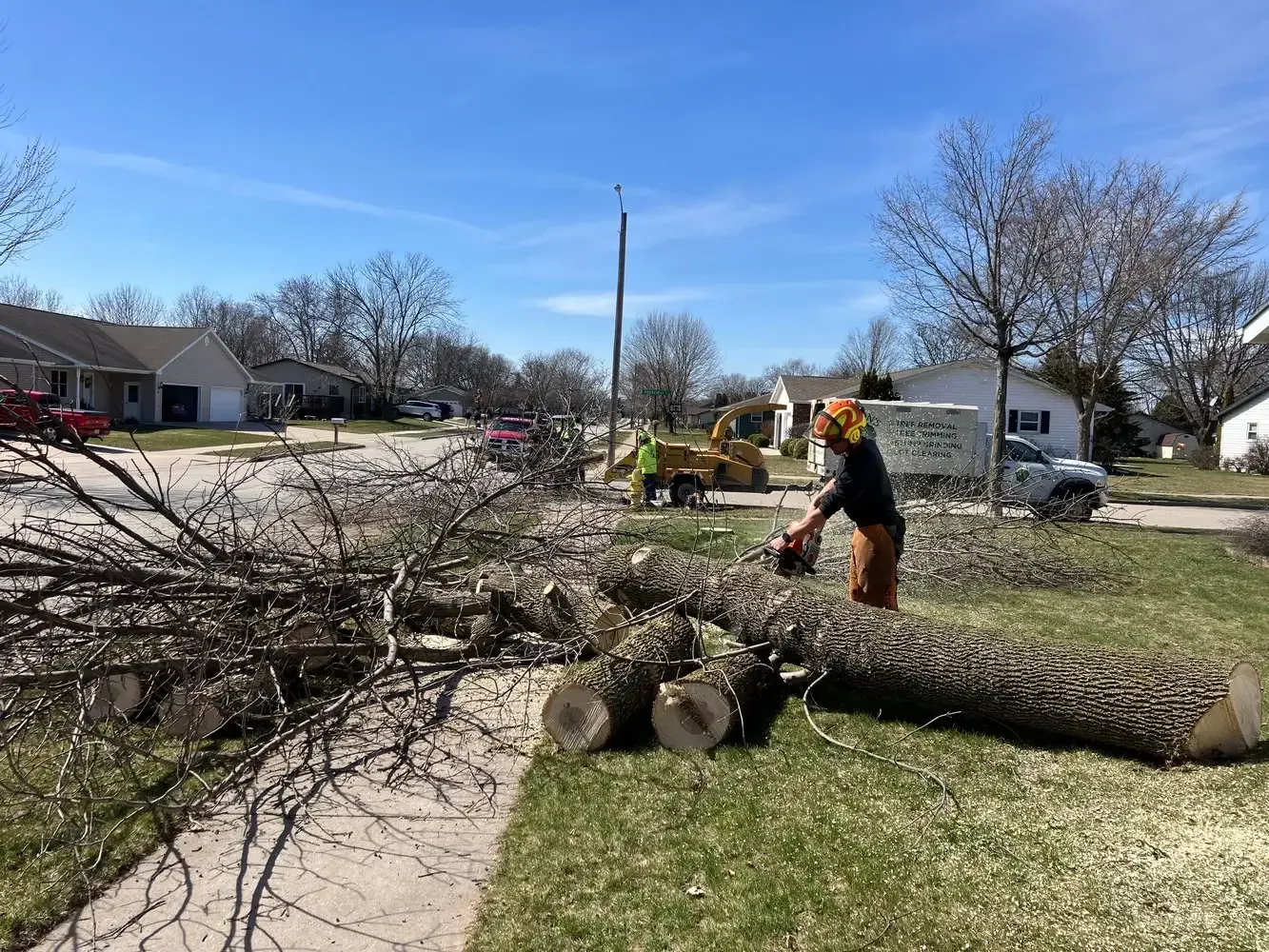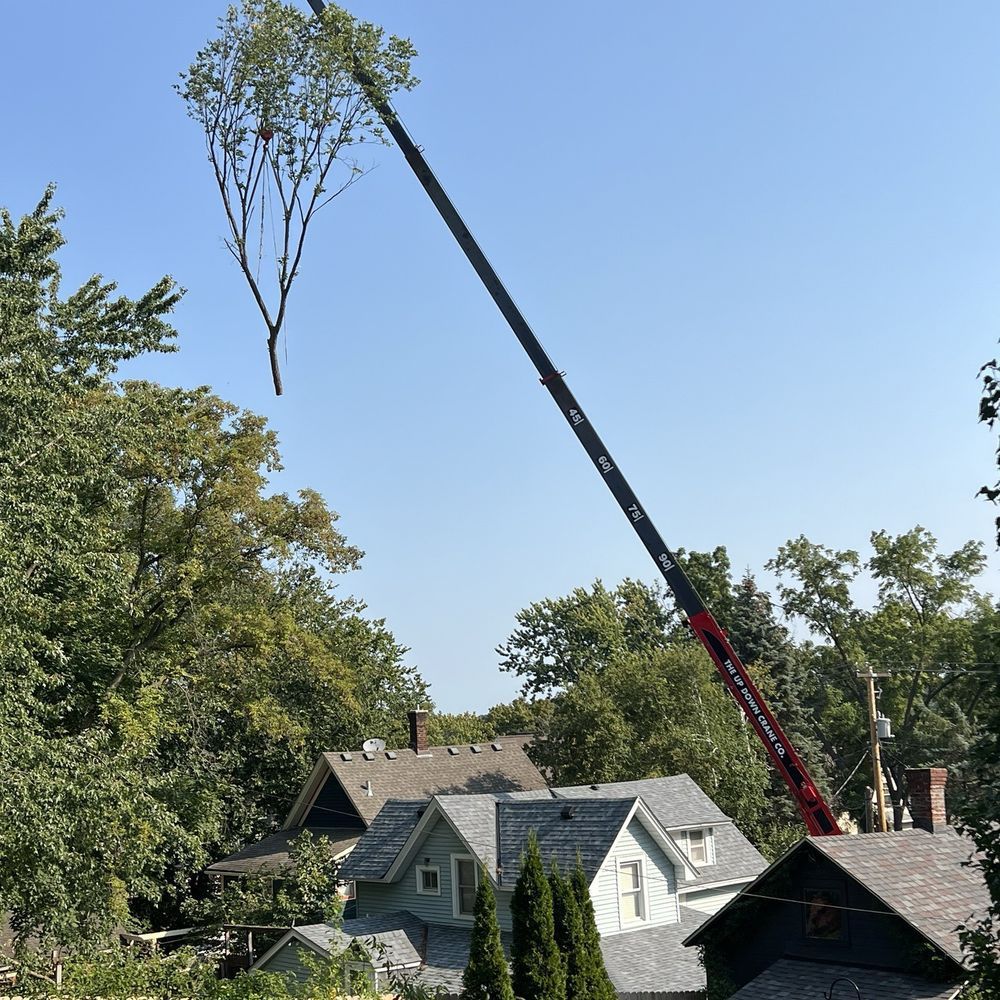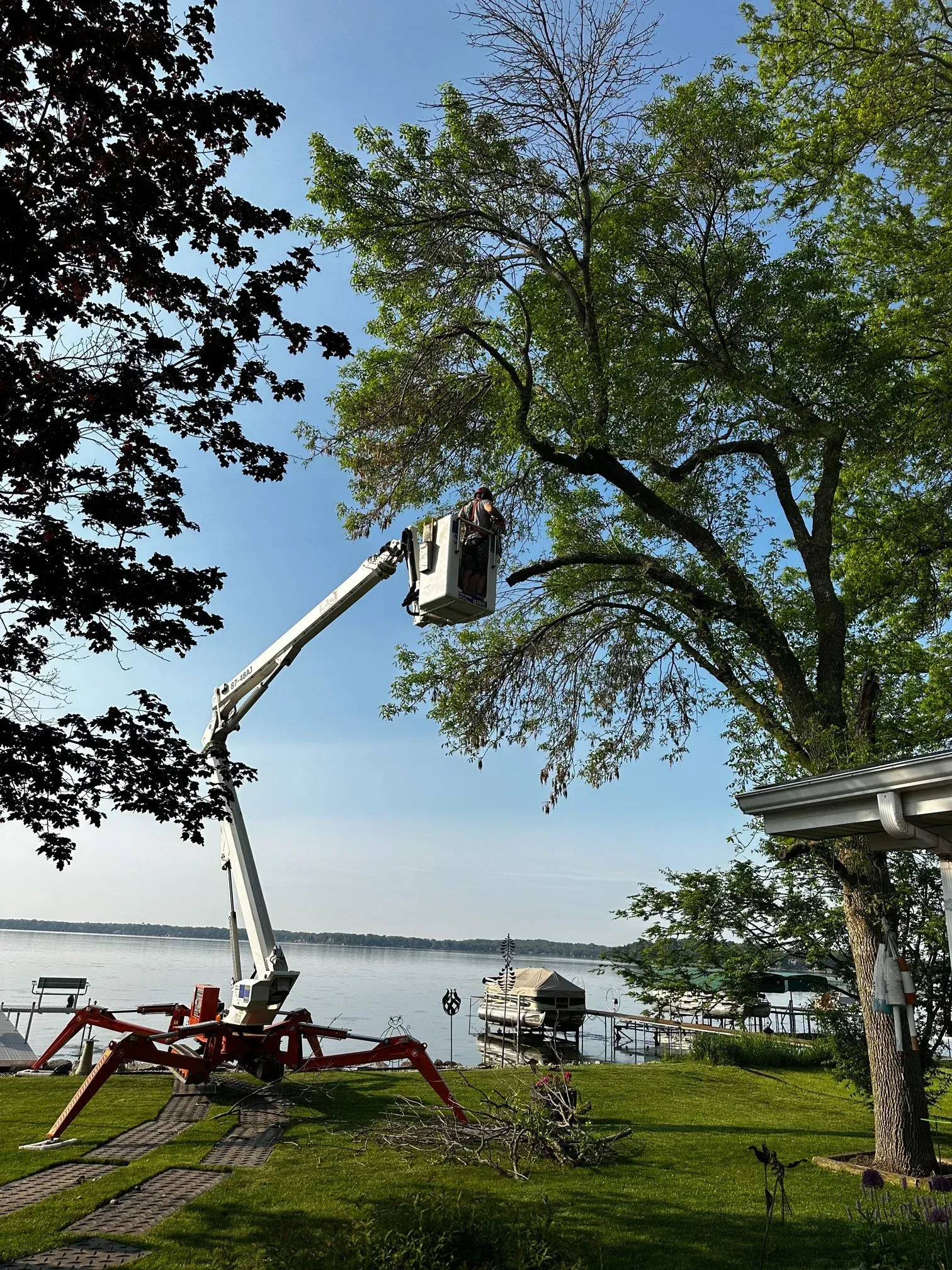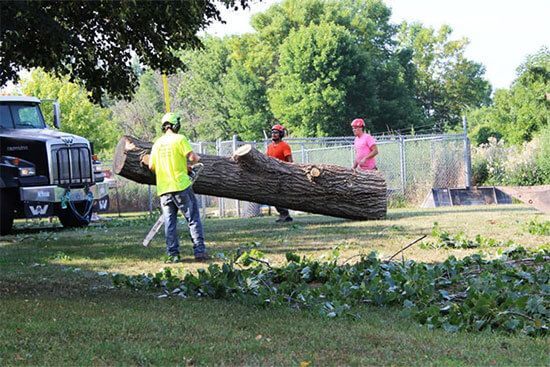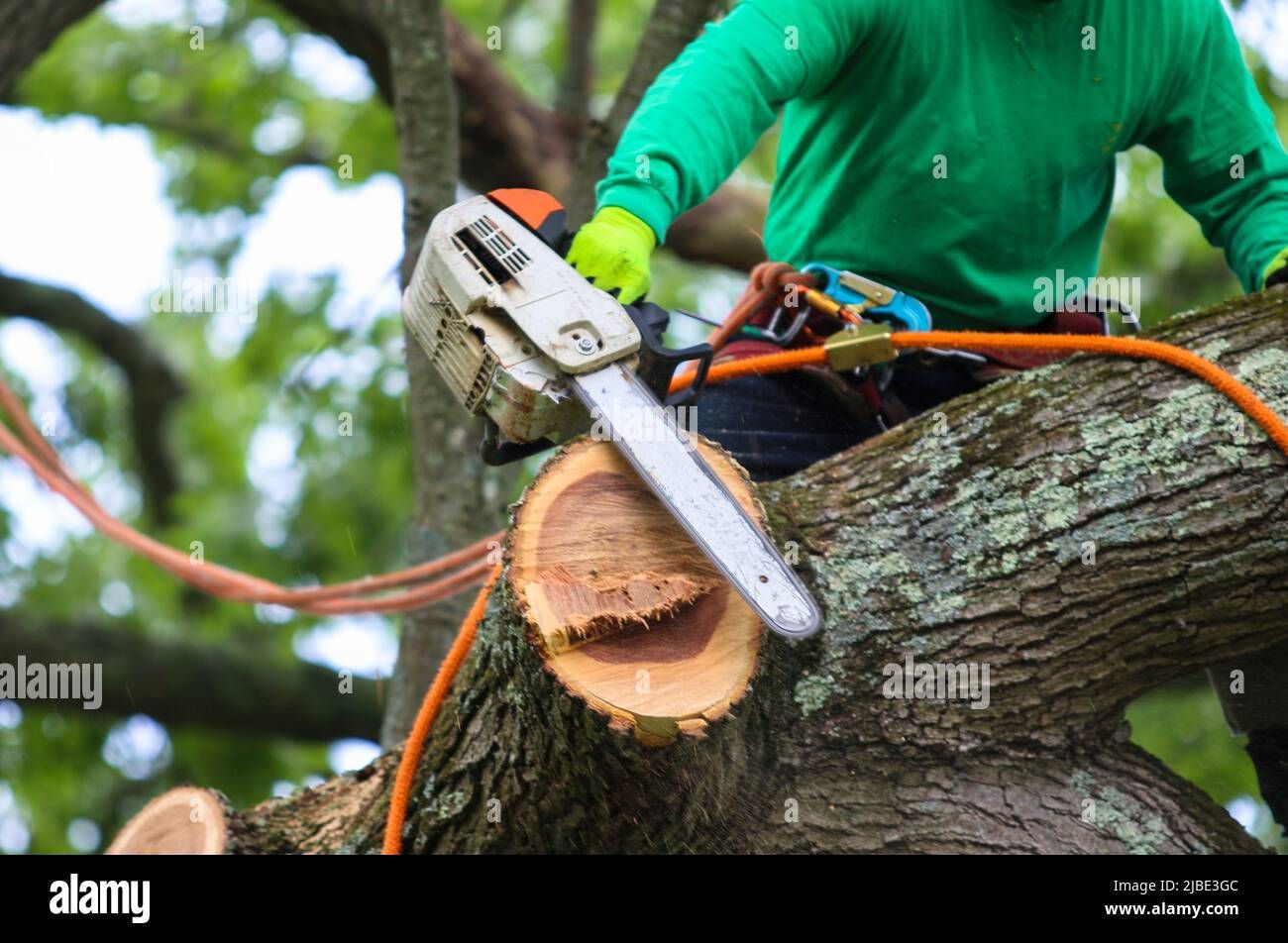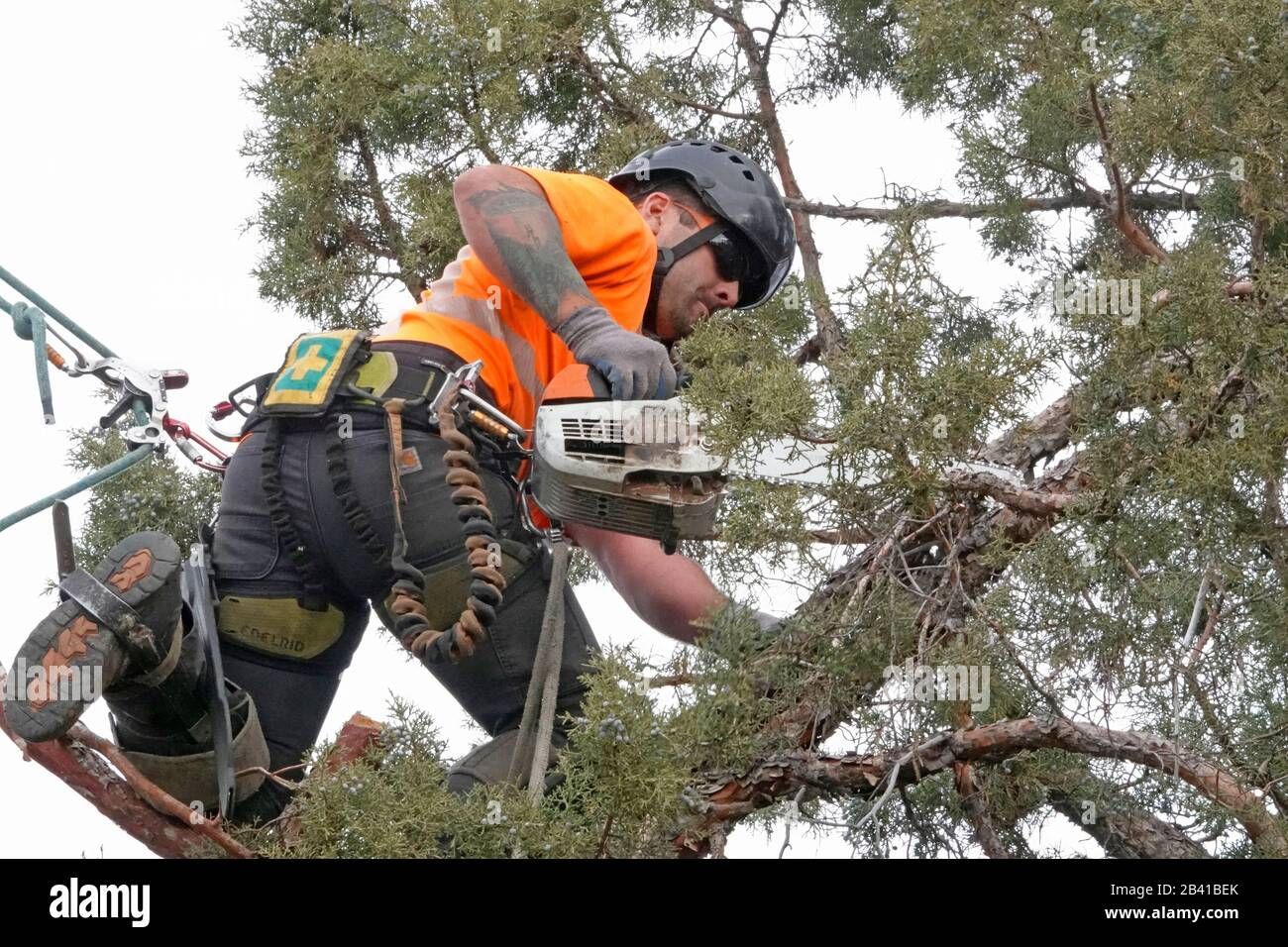Best Tree Trimming Times in Iowa City
Late Winter to Early Spring (February–April)
This is the ideal window:
- Dormant season—trees conserve energy, and wounds heal as buds awaken.
- Disease control—fungus and insect activity remains low.
- Line of sight—branches are bare, making structure easier to evaluate.
The last two weeks of February through early April are prime for pruning oak, maple, ash, and elm trees before spring growth starts.
Avoid Pruning in...
- Summer: Wounds heal slowly in heat; insects are active.
- Late Fall: Trees vulnerable to cold damage and stress; risk of bark splitting.
2. Safety Gear & Tools for Midwestern Weather
Essential Safety Gear
- Helmet + eye/face shield: Protects from branches and wood chips.
- Cut-resistant gloves: Shields hands from splinters and cuts.
- Sturdy hiking/work boots: Good grip on wet or frozen ground.
- High-visibility clothing: Important when working near roads or neighbors.
- Ear protection: Vital when operating chainsaws or voice chaos.
Recommended Tools
- Hand pruning saw: For branches 1–4 inches thick.
- Bypass pruning shears: Keeps clean cuts on live branches.
- Loppers (12–18"): For thicker, higher or hard-to-reach limbs.
- Pole pruner: Makes safe pruning overhead from the ground.
- Chainsaw: For professional-grade, larger cuts (use only with experience or hire a pro).
Tool Maintenance
- Sharpen blades monthly for clean cuts.
- Disinfect tools (70% alcohol) between trees to prevent disease spread.
3. Pruning Goals & Techniques
A. Structure & Form
- Central leader vs multiple leaders: Ensure stable tree architecture.
- Remove rubbing or crossing branches to prevent wounds.
- Establish scaffold branches: space major branches vertically and radially every 6–8”.
B. Disease Prevention
- Trim diseased or dead wood—look for cracks, dieback, fungal growths.
- Space branches to improve air flow and light, reducing humidity and fungus.
C. Storm Resilience
- Eliminate weak crotches: narrow angles can snap in storms.
- Shorten long lateral limbs (>1/3 of tree width) to reduce wind stress.
- Thin canopy edges to reduce wind resistance during storms.
Pro Pruning Techniques
- Cut close to branch collar without damaging it.
- Three-cut method for large limbs: undercut, top cut, then final clean cut.
- Don’t over-prune: never remove more than 25% of live canopy annually.
4. DIY vs Professional Help: What to Watch For
DIY Pruning — When It Makes Sense
- Small branches (up to 2–3”) that are reachable with loppers or a pole saw.
- Seasonal light clean-up—removing dead tips and small diseased shoots.
- You have steady ground, no nearby power lines, and proper gear/safety mindset.
Hire Frank’s Tree Service for:
- Large branches or tall trees—risk of falling hazards skyrockets.
- Wrong cuts risk serious harm: poor cuts can invite disease, pests, or structural weakness.
- Insurance and liability protection: we’re fully equipped and certified.
- Storm-damage emergencies—we have the skill and gear to safely stabilize trees.
5. Step-by-Step Pruning Guide for Iowa City Yards
- Assess the tree: identify dead limbs, crossing branches, or hazard zones.
- Plan your cuts—prioritize safety and structure.
- Pick the right tool—shears for small work, pole saw for mid-size limbs.
- Wear proper safety gear before making any cuts.
- Make clean cuts near the branch collar to encourage healthy recovery.
- Avoid “topping”—never cut canopy tops flat across—leads to unhealthy regrowth.
- Clean up debris properly—wood chips are useful mulch; large limbs may need professional removal.
6. Why Pruning Matters for Iowa City Trees
- 🛡️ Health & longevity: clean pruning prevents disease and stimulates recovery.
- 🧱 Structural integrity: well-pruned trees resist ice storms and wind events.
- 🍂 Aesthetic value: improves yard appearance and property value.
- 🌱 Wildlife benefit: open canopy encourages bird activity and ecosystem balance.
7. Local Tips for Cedar Rapids & Iowa City Homeowners
- Iowa City permits: pruning dead branches rarely requires a permit—but check for protected, historic, or street trees.
- Winter storms frequent: schedule inspections post-snow/ice events.
- Mulching: use chips from pruning to protect newly pruned areas and insulate root zones.
8. Frequently Asked Questions (FAQ)
Q1: Can I prune during a light freeze?
Yes—light winter pruning is OK, but avoid cutting when temperatures dip below 20°F, as wood can fracture.
Q2: How much do pro pruning services cost?
Prices vary—from
$150–$450+, depending on tree size, height, and complexity.
Q3: Will new growth sprout from cuts?
Yes—healthy trees respond well. Avoid topping; trimming back to lateral branches supports natural growth.
Q4: When should diseased wood be removed?
Any dead or infected limbs should be removed promptly once discovered to prevent spread.
9. Why Choose Frank’s Tree Service
- ✅ Local Experience: Years serving Cedar Rapids & Iowa City with tailored, climate-aware care.
- 🧰 Certified Professionals: Fully insured, trained, and equipped for safe pruning.
- 🤝 Customer-First Approach: We explain pruning plans clearly, showing before/after assessments.
- 🌎 Eco-Friendly Practices: Chips and mulch are reused on-site or composted responsibly.
Conclusion
By pruning at the right time, with proper equipment, defined objectives, and knowing when to call the pros, you ensure your Iowa City trees thrive—boosting safety, beauty, and resilience.
Need help? Contact Frank’s Tree Service for expert pruning that’s safe, efficient, and tailored to our local conditions. Let’s keep your yard looking its best year-round!

